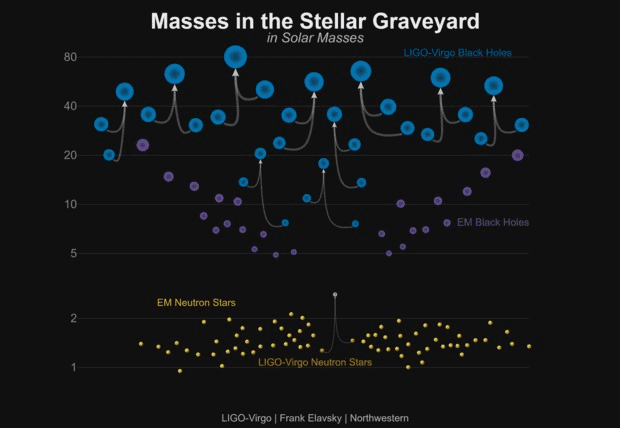https://en.wikipedia.org/wiki/Sagittarius_A* wrote:
<<Since the 1980s it has been evident that the central component of Sgr A* is likely a black hole. Infrared and submillimetre spectroscopy by a Berkeley team involving Nobel Laureate Charles H. Townes and future Nobelist Reinhard Genzel showed that the mass must be very tightly concentrated, possibly a point mass.
On October 16, 2002, an international team led by Reinhard Genzel of the Max Planck Institute for Extraterrestrial Physics reported the observation of the motion of the star S2 near Sagittarius A* throughout a period of ten years. According to the team's analysis, the data ruled out the possibility that Sgr A* contains a cluster of dark stellar objects or a mass of degenerate fermions, strengthening the evidence for a massive black hole. The observations of S2 used near-infrared (NIR) interferometry (in the K-band, i.e. 2.2 μm) because of reduced interstellar extinction in this band. SiO masers were used to align NIR images with radio observations, as they can be observed in both NIR and radio bands. The rapid motion of S2 (and other nearby stars) easily stood out against slower-moving stars along the line-of-sight so these could be subtracted from the images.
The VLBI radio observations of Sagittarius A* could also be aligned centrally with the NIR images, so the focus of S2's elliptical orbit was found to coincide with the position of Sagittarius A*. From examining the Keplerian orbit of S2, they determined the mass of Sagittarius A* to be 2.6±0.2 million solar masses, confined in a volume with a radius no more than 17 light-hours (120 AU). Later observations of the star S14 showed the mass of the object to be about 4.1 million solar masses within a volume with radius no larger than 6.25 light-hours (45 AU) or about 6.7 billion kilometres. S175 passed within a similar distance. For comparison, the Schwarzschild radius is 0.08 AU. They also determined the distance from Earth to the Galactic Center (the rotational center of the Milky Way), which is important in calibrating astronomical distance scales, as (8.0±0.6) kiloparsecs. In November 2004 a team of astronomers reported the discovery of a potential intermediate-mass black hole, referred to as GCIRS 13E, orbiting 3 light-years from Sagittarius A*. This black hole of 1,300 solar masses is within a cluster of seven stars. This observation may add support to the idea that supermassive black holes grow by absorbing nearby smaller black holes and stars.
After monitoring stellar orbits around Sagittarius A* for 16 years, Gillessen et al. estimated the object's mass at 4.31±0.38 million solar masses. The result was announced in 2008 and published in The Astrophysical Journal in 2009. Reinhard Genzel, team leader of the research, said the study has delivered "what is now considered to be the best empirical evidence that supermassive black holes do really exist. The stellar orbits in the Galactic Center show that the central mass concentration of four million solar masses must be a black hole, beyond any reasonable doubt."
On January 5, 2015, NASA reported observing an X-ray flare 400 times brighter than usual, a record-breaker, from Sgr A*. The unusual event may have been caused by the breaking apart of an asteroid falling into the black hole or by the entanglement of magnetic field lines within gas flowing into Sgr A*, according to astronomers. On 13 May 2019, astronomers using the Keck Observatory witnessed a sudden brightening of Sgr A*, which became 75 times brighter than usual, suggesting that the supermassive black hole may have encountered another object.>>
 The Doubly Warped World of Binary Black Holes
The Doubly Warped World of Binary Black Holes

